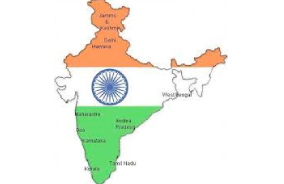19 July 2022
In this post, we unpack the regulatory compliances a medicinal hemp product has to go through.
Introduction
In our last post1 we spoke about the history, science and the regulator’s take on cannabis. In this installment on cannabis regulation, we tell you how you can cultivate, sell and market your hemp products.
Largely, hemp can be legally cultivated, processed and sold– but only for scientific, medicinal2 or food or industrial purposes3. For the purposes of this post, we will discuss only the medicinal route of doing business. Before we begin, here are some things you need to know, to understand the next section better:
1. Applicable law: The Narcotic Drugs and Psychotropic Substances Act, 19852 (NDPS), Drugs and Cosmetics Act,1940 (DCA), excise laws and cannabis specific state laws apply.
2. The regulator: The excise department of respective states are responsible to issue licenses for cultivation, possession and use of cannabis. From a medicinal use perspective, it is the Ministry of AYUSH. And the Food Safety and Standards Authority of India (FSSAI) for food related use cases.
3. Red flags: Recreational use of the plant is prohibited by law. Also, use without proper permits, and in some cases selling without a prescription, might also land you in trouble.
4. Quantity matters: Regulations prescribe how ‘strong’ your hemp can be (ie – levels of THC and CBD) – be it for cultivation or manufacturing. Check out our last post, for what CBD and THC mean, and what they do.
The checklist
The table summarizes the compliance and requirements a business must comply with, to kick their medicinal hemp business off the ground.

Other general laws on e-commerce, telemedicine, and consumer protection will also apply. But these laws do not carve out any special obligations for hemp businesses.
Where do we go from here?
Policy makers have a lot to consider. The current regime is blindsided by the societal stigma attached to cannabis that hurts the ability of businesses to bring their products to market There is a need for policy to account for- reducing consumption among risky communities, regulating marketing activities, and proactively educating consumers. This would call for involving stakeholders like health practitioners, researchers and scientists, hemp business, among others. Further, harmonization of compliances and enabling a regulatory environment which aids ease of doing business is necessary. While the central government is looking to revamp the DCA itself13, it doesn’t bring any clarity to cannabis regulation.
On the other hand, states like Tamil Nadu are acknowledgingxiv the increase in demand for hemp and its value-added products. The state government is considering legalizing hemp cultivation for industrial and medical purposes, and has asked the Tamil Nadu Agriculture University to submit a feasibility report for the same.
Finally, with the industry seeing so many new players emerge, we must learn from nations that have a much more mature landscape. Watch Hasan Minhaj breakdown the nuances of what the cannabis industry in the US is grappling with.
Footnotes
4 Section 8 of the NDPS
5 https://hemptoday.net/second-indian-state-frees-hemp/
7 For instance, see: https://deoria.nic.in/past-notices/tenders/
9 Section 3 (h) of the DCA
10 https://www.ayush.gov.in/docs/guideline-drug-development.pdf
11 Form 24D of the DCA
12 Section 10 of the DCA
13 Proposed drugs and cosmetics Act https://main.mohfw.gov.in/sites/default/files/Drugs%2C%20Medical%20Devices%20and%20Cosmetics%20Bill.pdf
The content of this article is intended to provide a general guide to the subject matter. Specialist advice should be sought about your specific circumstances.






